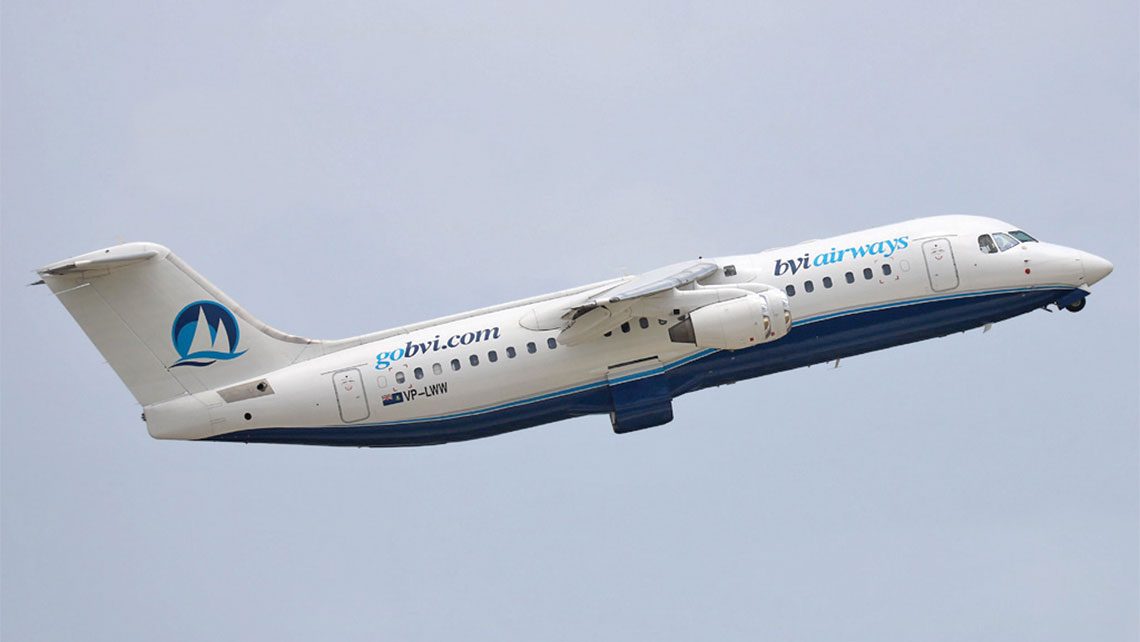
You might also like:
A revamped British Virgin Island Airways (BVIA) expects to begin operating the first nonstop commercial service between the U.S. and the BVI sometime this summer.
“We are focusing our efforts on this like a laser to make sure it is done right from the start,” BVIA CEO Jerry Willoughby said in an interview with Travel Weekly.
The initial route would be between Miami and Beef Island Airport, which is connected by a bridge to the country’s main island of Tortola. Service is expected to be offered three to four days per week at first, then expanded as demand grows.
Willoughby, a longtime military and Delta Air Lines pilot who later worked as an aviation consultant, leads the group that in 2014 acquired BVIA, a former intra-island turboprop operation. Until its launch of a lone charter flight between Tortola and Curacao on April 13, the carrier had been out of service since fall 2014 as it worked to transform itself into a commercial jet operation with daily flights to the U.S.
In April, BVIA received DOT approval to operate in the U.S. That decision followed the January approval by the U.K.’s regulatory agency, Air Safety Support International. The company must still receive FAA clearance before scheduling flights.
BVIA is banking that the direct service unleashes pent-up demand for the British Virgin Islands in the U.S. At present, Beef Island Airport only offers service to nearby Caribbean islands. Most U.S. travelers get to the BVI by connecting via propeller plane through San Juan or by flying into St. Thomas in the U.S. Virgin Islands, then taking an approximately 45-minute ferry ride.
Along with being more efficient, Willoughby said the daily nonstop route from Miami to Tortola would be cheaper than existing options. And for people who live in the many U.S. markets that offer Miami service but no San Juan service, it will turn what would have been a two-stop itinerary into a much less daunting one-stop trip.
Americans accounted for approximately 70% of the 406,000 visitors who stayed overnight in the BVI last year, said Keith Dawson, marketing manager for the BVI Tourist Board.
“I think it’s a game-changer,” Dawson said of the planned BVIA launch. He added that the greater ease of travel should bring in visitors who to this point haven’t been drawn to the destination.
“I think it can help the situation in providing more airlift options, not only to the North American visitors but also to those who are connecting through Miami,” Dawson said.
John Glynn, vice president of sales and marketing for Bitter End Yacht Club International, an upscale 47-room resort on Virgin Gorda, BVI’s second most populous island, expressed similar optimism, saying the Miami flights could open the island to more tourism by Canadians and South Americans, as well as U.S. travelers.
Glynn said he talked up the pending service on a recent spate of sales calls in South Florida.
“It was amazing to see how many agents were already familiar with this service and it isn’t even in place yet,” he said.
BVIA plans to fly the Tortola route with a British-made Avro Regional Jet 100, which was designed to handle short runways such as the one at Beef Island Airport. The plane is configured with 12 business-class seats and 74 coach seats.
The carrier will sell tickets through the Amadeus and Sabre GDSs, as well in direct channels and on OTAs, said Scott DeLacy, BVIA’s chief operating officer.
BVIA will pay commissions. “We expect our commission to be competitive and attractive,” DeLacy said.
BVIA is interested in interlining with U.S. carriers, including American, which has a hub in Miami, Willoughby said.
Additional routes could be in the offing. The DOT recently approved BVIA applications for authority to operate flights to New York and Orlando.
Sоurсе: travelweekly.com
